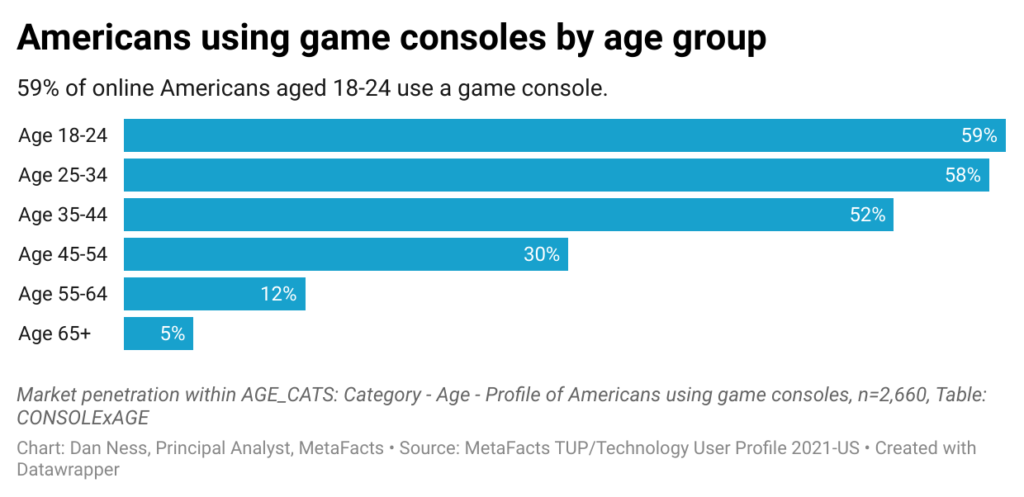Dan Ness, Principal Analyst, MetaFacts, October 2, 2021
Profile of American game console users
- All online American adults who regularly use a game console
- They number 77 million – 35% of all online American adults
- Profiled by characteristics that are distinctive
- Only profiled by those characteristics which have an index of 80 or below and 120 and above – those which are 20% above or below the average by category
- Expressed as market penetration – the percentage of online adults within each group
- Distinctive characteristics profiles
- Age, age within gender
- Employment status
- Presence of children
- Household size
- Life stage (age, employment status, presence of children)
- Number of home PCs used
- Technology ecosystems
- Characteristics examined and not found to be distinct
- Educational attainment
Americans who regularly use a game console by age group
- Game console users skew younger
- Game console use is strongest among the youngest American adults
- Penetration among online Americans aged 18-34 is 58%-59%
- Beyond age 45, the rate drops steeply


